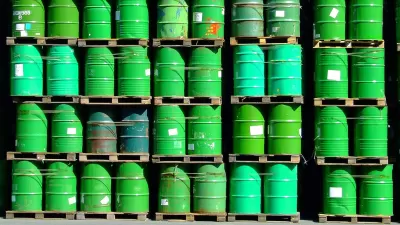Plunging oil prices are hitting three oil-producing countries the hardest: Venezuela, Iran, and Russia. This article looks at each of them and evaluates how they will fare if oil prices do not rise, including their relationships to the U.S.
More than any other nations, these countries used their oils wealth to gain regional influence and "to challenge United States hegemony."
"Now, the (oil) producers are experiencing a reverse oil shock," states oil expert Daniel Yergin. "As revenue went up, government spending went up and expectations of a continuing windfall led to greater and greater ambitions.
But such ambitions are harder to finance when oil is at $74.25 a barrel, its closing price Monday (10/20) in New York, than when it is at $147, its price as recently as three months ago."
Of the three,"Russia was better positioned to weather lower prices than were many other oil and gas producers. The country deposited a significant portion of its oil revenues into two stabilization funds, which totaled $190 billion at the beginning of this month. The Russian budget is pegged to an oil price of roughly $70 a barrel - most revenues exceeding that have gone to these so-called rainy-day funds."
From USA Today: "Falling oil prices pinch OPEC":
The recent plunge in oil prices threatens to trigger unexpected financial headaches for top producing nations, especially Iran and Venezuela.
USA Today: "Gasoline prices tumble despite likely OPEC cuts"
OPEC announced Oct. 19 "that members plan to announce a 'substantial' output cut at an extraordinary meeting that begins Friday (10/24) in Vienna."
FULL STORY: 3 Oil-Rich Countries Face a Reckoning

Trump Administration Could Effectively End Housing Voucher Program
Federal officials are eyeing major cuts to the Section 8 program that helps millions of low-income households pay rent.

Planetizen Federal Action Tracker
A weekly monitor of how Trump’s orders and actions are impacting planners and planning in America.

Ken Jennings Launches Transit Web Series
The Jeopardy champ wants you to ride public transit.

Congress Moves to End Reconnecting Communities and Related Grants
The House Transportation and Infrastructure Committee moved to rescind funding for the Neighborhood Equity and Access program, which funds highway removals, freeway caps, transit projects, pedestrian infrastructure, and more.

From Throughway to Public Space: Taking Back the American Street
How the Covid-19 pandemic taught us new ways to reclaim city streets from cars.

Opinion: Transit Agencies Must View Service Cuts as Last Resort
Reducing service could cripple transit systems by pushing more riders to consider car ownership, making future recovery even less certain.
Urban Design for Planners 1: Software Tools
This six-course series explores essential urban design concepts using open source software and equips planners with the tools they need to participate fully in the urban design process.
Planning for Universal Design
Learn the tools for implementing Universal Design in planning regulations.
Heyer Gruel & Associates PA
Ada County Highway District
Institute for Housing and Urban Development Studies (IHS)
City of Grandview
Harvard GSD Executive Education
Toledo-Lucas County Plan Commissions
Salt Lake City
NYU Wagner Graduate School of Public Service





























